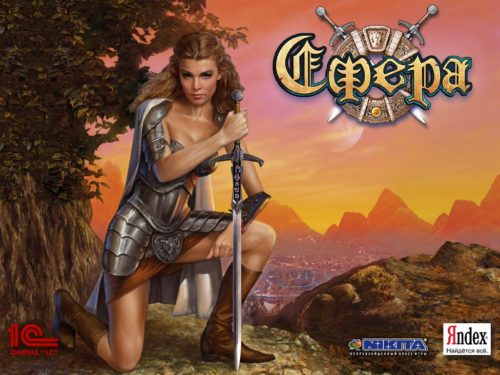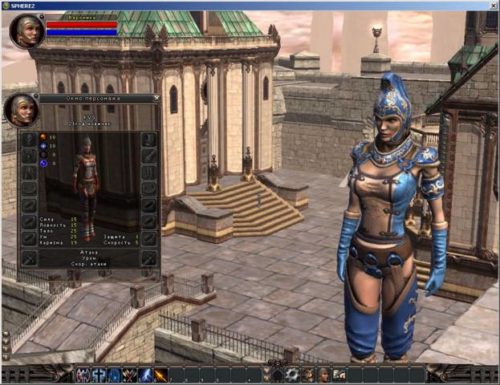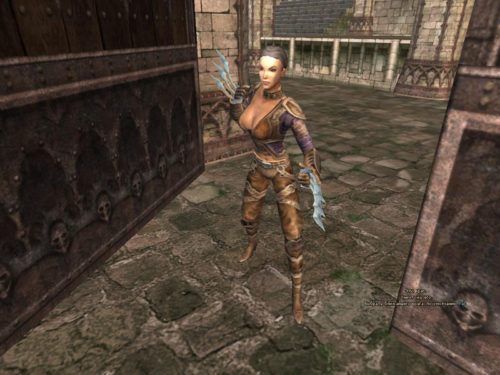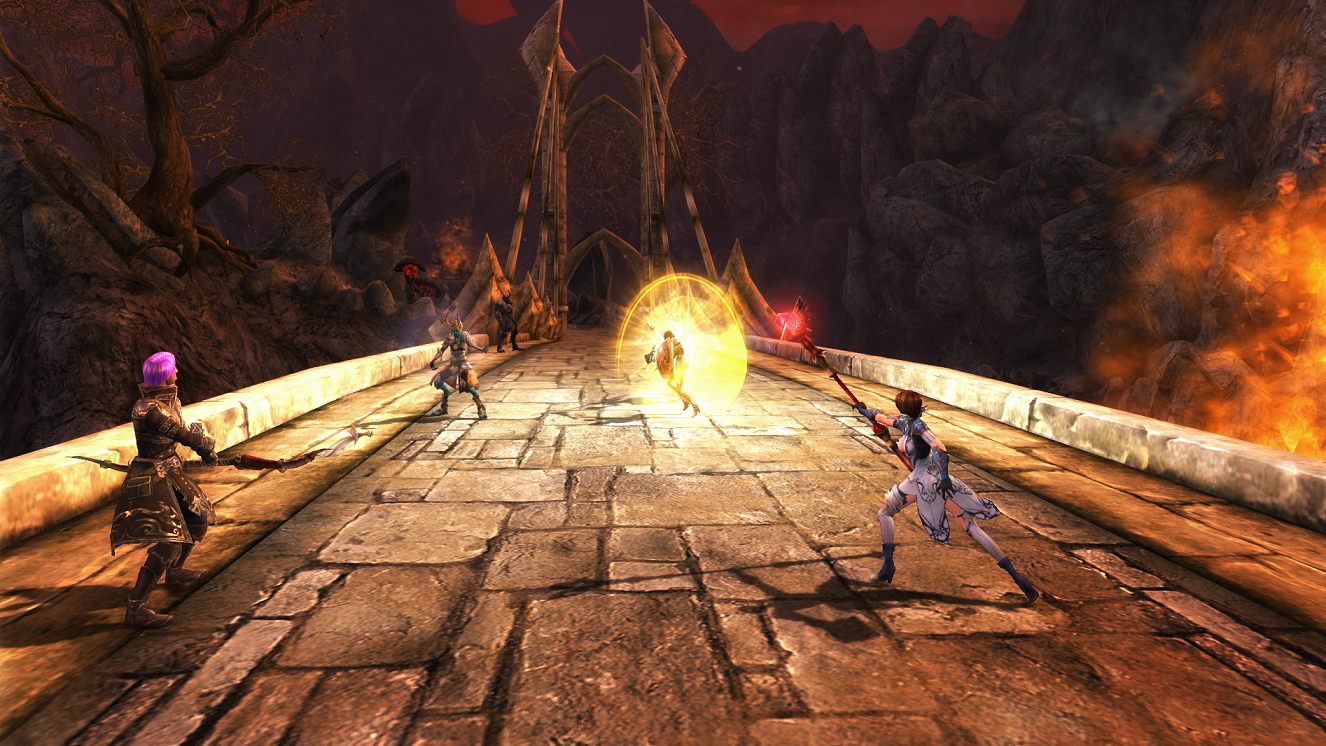How the Sphere was created: the history of the first domestic MMO series
In November 2003, the Russian company Nikita released the first Russian MMORPG. The game was called “Sphere”. After 15 years, this title already has three projects. We talked to Olesya Koroleva, Marketing Director of Nikita Online, about how the series developed.
“Sphere”
Alexander Semenov, Senior Editor App2Top.ru : How did the history of the project begin?

Olesya Koroleva
Olesya Koroleva, Marketing Director of Nikita Online: The story started back in the late nineties.
The development team in Rostov-on-Don (the future Studio 61) created the game “The Sixth Dimension” and invited us to publish it. The game turned out to be very unusual, even experimental, so we agreed with joy (and excitement). It turned out great – everyone was satisfied. It was in 1998.

“The Sixth dimension”
Meanwhile, the guys started creating the second game – “Full flight”. They really liked the various quests.
Quests weren’t a very popular genre, but we managed to make them innovative. In the box, for example, red-blue glasses were attached to the “Sixth Dimension”, allowing you to play a 3D version of the game on any monitor.

The “Sixth Dimension” box
But that wasn’t enough for us. There was an idea to make a game with several hundred quests. At the same time, we decided to make it online.
There was a good reason for that.
Do you remember what the Internet was like at that time? It was expensive, it worked through the phone and was paid with cards, plus it was necessary to purchase a modem for access. In the regions, the Internet was generally a luxury.
Despite this, at the beginning of the noughties, it began to spread in Russia, I would say, with cosmic speed, it became accessible to ordinary people.
We realized that we couldn’t miss the opportunity to be a part of it. There were very few online games at that time: only Anarchy Online, the first Lineage, Ultima Online are remembered.
We followed the releases, played everything, watched, came up with and, in the end, obsessed with this idea, started creating our own game.
In Rostov-on-Don, at first everyone worked on the game in their apartments, periodically gathering and combining disparate “pieces” and developments, then they rented a separate “office” – a whole three-room apartment on the first floor of a residential building.
The Moscow office joined Rostov a little later: testing, marketing, data engineering, balancing and many other things were done in Moscow.

Art to the first “Sphere”
The game was made in partnership with 1C and Yandex. The first helped with distribution, the second pumped in terms of Internet technologies. By the way, we, in turn, pumped “Yandex.Money”, since all payments, character sales and other monetary transactions, of which there were a lot, passed through them (although they, of course, do not admit this). We were all obsessed with the idea of online.
Can you tell me what the budget was for the first part?
Olesya: You need to understand that it’s been almost 15 years! It’s very difficult to say, but it’s definitely not about millions of dollars. Maybe hundreds of thousands.
A certain synergistic effect worked for us: together with 1C, we invested in the development of forces and money, and Yandex helped us with equipment, payment acceptance, and advertising.
How problematic was the development?
Olesya: The whole development was one big problem.
First of all, we didn’t really understand what an online game was. We did everything blindly. There were no references, it was impossible to Google then.
One of our employees, Mikhail Borisenko, created his own scripting language for the development of the game, so complex that it was extremely difficult for other game developers to understand it! However, thanks to this, no one has hacked the “Sphere” so far.
It was very difficult, but still, no matter what anyone says, we are the first Russian company to develop an online client game (and the second one too), the oldest developer.
In how many months has the game reached payback?
Olesya: It’s hard to remember. In about a year or a little over a year. But the operating profit of the game came out almost immediately.
How did you decide what price to put on a subscription?
Olesya: We just looked at the cost of subscriptions to the European Games and put a lower price. For example, the European game cost $ 15, and we bet $ 5 because…
It seemed to us that this was normal. Import substitution.

“Sphere”
In 2004, you started distributing the game through gaming magazines. The project began to be uploaded on DVD applications to them. How big an increase did it give?
Olesya: Now, in order to distribute the game client through the magazine, you would have to pay a lot of money, this is obvious. And then we were paid for the “Sphere”.
The increase was huge, the audience grew by about 2 times, as the circulation of gaming magazines numbered in the tens of thousands, and a lot of disks were distributed.
But, of course, we also continued to sell in retail.
By the way, we had a funny story connected with this.
We were preparing a premium add-on “Sphere: The World of the Chosen”. This rarely happens in the industry, but we met the deadlines, made the addition on time, maybe even earlier!
And they forgot to publish it.
Our producer just forgot to send the disc to 1C. As a result, of course, it was published three weeks later, but with confidence that we would never sell it because of the high price – the game was in a premium package – in a DVD box – and cost much more than a regular disc (at that time a regular disc cost 150 rubles). However, at the presentation of the add-on, we sold out a box of discs in about 5 minutes, and the last disc went out of the auction for a lot of money.
In 2007, you switched from a subscription to a shareware model: did you have to change a lot in the game then?
Olesya: The mathematics of the frituplein “Sphere: Rebirth” didn’t have to be much redone: we just took the coolest things, removed them from the drop and added them to the store. Simple and tasteful.
But there were difficulties – then there were no payment aggregators that you could simply connect to, so we created all the tools for authorization and billing ourselves. And with payment systems that did not understand what games were at that time, we built relationships from scratch.

“Sphere: Rebirth”
“Sphere 2”
How soon did you take up the project after the launch of the first part?
Olesya: We did not take up the development of Sphere 2 immediately, but only a couple of years after the launch of the first part – we wanted to make a special game and prepared for a long time.
Was it made by the same team?
Olesya: No. Initially, the “Sphere 2” began to be made in Moscow.
In 2008, the Moscow Nikita development studio was dissolved. We moved the work on Sphere 2 to Rostov-on-Don. Studio 61 started playing the game.
Is the dissolution of the Moscow team the result of the fact that it failed to make an MMO?
Olesya: The Moscow development studio has done a lot of good projects. But if we talk about online games and specifically “Sphere 2”, then the development of the Moscow studio turned out to be ineffective. The work was done for a long time, it turned out to be expensive and ineffective.
The team was certainly talented, but something went wrong, so it was decided to abolish the development in Moscow.
Although the creation of the second part was moved to Rostov-on-Don, the project never came out. At what stage did it become clear that you were not pulling it out?
Olesya: The decision to close Sphere 2 was made at the stage when we almost had to release it! For the third time.
I must admit that we wanted to make a bomb game with a wild total PvP, swung at a very high quality, tried to do something incredible, but in the end it turned out to be complete nonsense.
The resulting game slowed down, lagged, was generally unplayable.
They tried to fix it, redo it, these ordeals lasted for quite a long time, and in the end we decided that it was time to finish everything and close the project in the form in which it was.

“Sphere 2”
What is the reason that other teams should pay attention to so that they don’t step on the same rake when developing an MMO?
Olesya: Just don’t do client MMO, you still won’t succeed. It is expensive, long and difficult.
But you released “Sphere 2: Arena”. What has the game become for the series?
Olesya: Initially, this game was planned as a supporting title for Sphere 2. Actually, we released the Arena on its models and graphics.
“Sphere 2: Arena” is an unusual MMORPG – there was no plot, no world to explore, there were no mobs suitable for battles. The main features of the game were arenas designed for battles between players and clans of players, all pumping took place only at the expense of hardcore PvP.
There were a lot of problems in the Arena, as well as in its “older sister”: over time, we discovered more and more errors and shortcomings that could not be eliminated as quickly as it was required. This was the reason for the closure. But PvP was really interesting there. We thought about resuscitating the product several times.

“Sphere 2: Arena”
“Sphere 3”
How long has the third part been in development?
Olesya: Sphere 3 has been in development for a long time – about 5-7 years.
A lot of experiments were carried out on it: a large number of things in the game were redone, refined, optimized.
At the initial stage of the development of Sphere 3, we had a relatively small team. Only over time we started to expand and strengthen it, so the development was slow.
Why in terms of style in the third part went in the direction of Korean MMOs?
Olesya: At the time of the beginning of the development of Sphere 3, users liked just such games, such graphics and such gameplay. Korean games and Korean style were at the peak of popularity at that time, and we were guided by this when creating the game.
However, during the time that the game was in development, the preferences of the audience really changed a little.
It is clear that during the development and support of the first “Spheres” a lot of bigwigs were stuffed. Based on this experience, what was immediately abandoned during the development of the third part, and what was implemented in the first place?
Olesya: Of course, we added to Sphere 3 what the audience liked the most. First of all, large–scale sieges of castles. We also moved the dungeons, bosses and cheerful hardcore PVP, because that’s why the players loved the first “Sphere”.
We stuffed the “bumps” mainly with technology. Some problems of the old parts even first moved to the “Sphere 3”, but then, fortunately, they were able to fix them.
Again, we tried to make the quests more interesting. In the first part, they were monotonous both in terms of mechanics and in terms of text content. In the 3rd part, the main main plot was helped by the famous science fiction writer Alexander Zorich.

“Sphere 3”
What did the game have with the basic metrics at the start?
Olesya: There was an ass. I don’t even want to remember.
To rectify the situation, we had to make a number of changes to the game. For almost a year now, Sphere 3 has been in excellent condition. The indicators are at or above the level of quality Asian products that we monetize very well.
What solutions do you use to track basic metrics?
Olesya: Different. Both fully created and developed by us, and third-party solutions. In terms of marketing, we work with some standard systems for many companies – Yandex.Metrica, Google Analytics.
Plus, over the years of working with online games, we have built a fairly large hardware and software complex. We collect so much data that we don’t even always know why we need it.
What were the biggest reasons for the players’ dumps and how were they solved?
Olesya: At one point, we discovered that with the introduction of new functionality into the game at certain levels, players began to leave, as it became quite difficult for them to deal with all the innovations.
To combat the dump, we came up with a “level newsletter”, which describes in detail all the innovations, explains how these innovations function, how to interact with them and what awaits the player now.
At the levels of the dump, players receive good gifts and explanatory letters and thanks to this they swing, pass the levels and stay in the game. This decision raised the retention very decently.
In addition, it was quite difficult to keep many users at the initial stage of the game. As it turned out later: it is difficult for them to swing at the very beginning.
We began to give players a cool loot collector – not forever, of course, for a while. This solution turned out to be very effective: the loot collector greatly facilitates pumping at low levels and helps to pass on.
Of course, we are constantly working on dumps – there are a lot of cases and ideas, but this is the first thing that came to mind.

“Sphere 3”
What about the metrics of the game now?
Olesya: Oh, the question is about the numbers.
Since the release, we have made a number of significant changes to the game, adapting to the comfort and interest of the players. This has borne fruit.
For example, the average check has grown by about 2 times over the past year. This is a very good growth for the project in the context of high-profile launches of other online games during this period.
If we talk about users, now we are actively attracting players to Sphere 3, increasing and expanding the audience (in other words, actively advertising), both on our own and through partner sites.
Retention of the second week averages 35%, and the percentage of those paying is about 8-10%.
But you need to understand that it is almost impossible to talk about indicators when you are in the stage of dynamic, active growth. We just know it’s going to be much better.
Thanks for the answers and good luck!